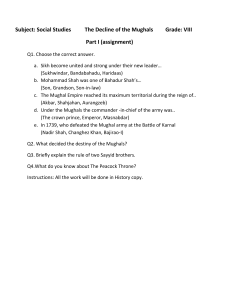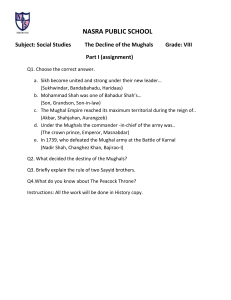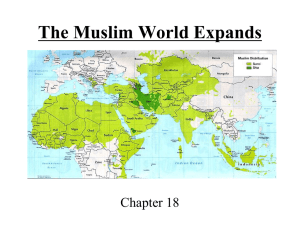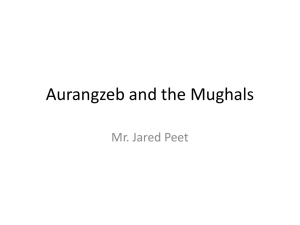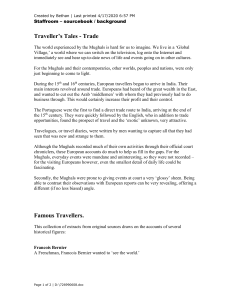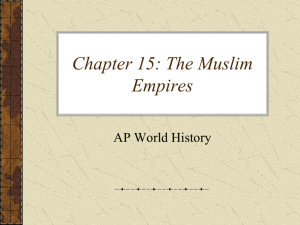Mughal Empire
advertisement
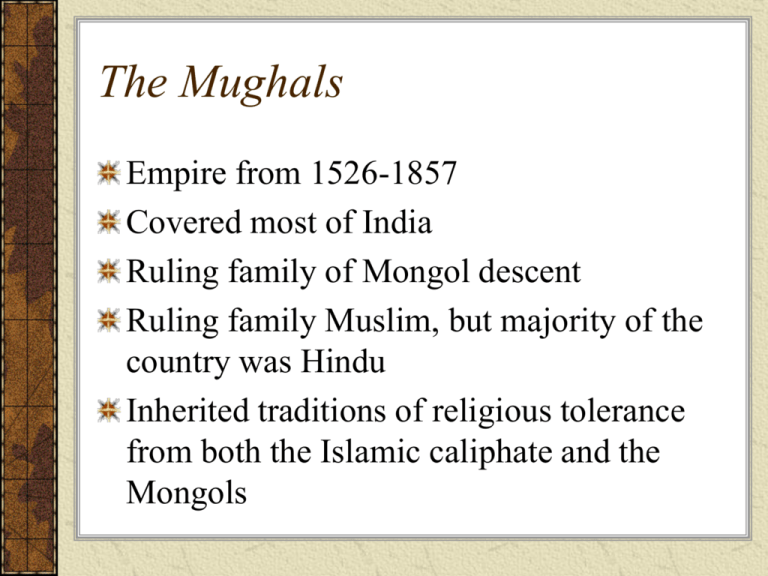
The Mughals Empire from 1526-1857 Covered most of India Ruling family of Mongol descent Ruling family Muslim, but majority of the country was Hindu Inherited traditions of religious tolerance from both the Islamic caliphate and the Mongols Mughals The Mughals Babur founds the Mughal Dynasty through military conquest by 1526. – Used Ottoman military tactics – Was less motivated by religion than the other Muslim Dynasties – Establishes a dynasty that will expand and last for over 300 years! The Mughals Akbar (r. 1556-1605) – Created the most prosperous empire of the 16th century – One of the greatest leaders in history – Ruled at the same time as Elizabeth I, Suleiman the Magnificent, and Abbas the Great (I). The Mughals Akbar (cont’d) – Had a vision of uniting India under his rule – Patronized the arts – Pursued policies of reconciliation and cooperation with Hindu princes and the Hindu majority • Encouraged intermarriage • Promoted Hindus (Rajputs) to the highest ranks (Manasabdars) • Disputes were settles within ones religious customs • “Divine Faith”: Din-i-ilahi which blended Hindu and Muslim elements The Mughals Akbar’s legacy – Din-i-ilahi was unsecessful – Religious views did not survive him – Court culture reflecting a mixture of Muslim and Hindu traditions The Mughals Aurangzeb (r. 1658-1707) Two goals: – 1. extend Mughal control throughout the subcontinent – 2. purify Islam and rid the subcontinent of Hinduism – He was largely unsuccessful in both The Mughals Religious policies weakened the internal alliances and disrupted the social peace from Akbar. Mughal Empire was under attack from all areas, and ultimately was too weak to do anything about it. Decline of the Mughals leads to growing military and economic intervention by the Europeans (like, France in 1741 and then the British in 1754).
